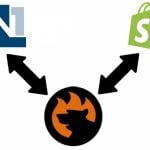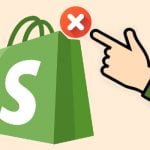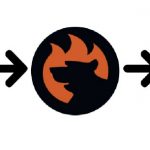Discovering The True AOV Meaning: The Secret to Growing Your E-Commerce Business Without More Customers
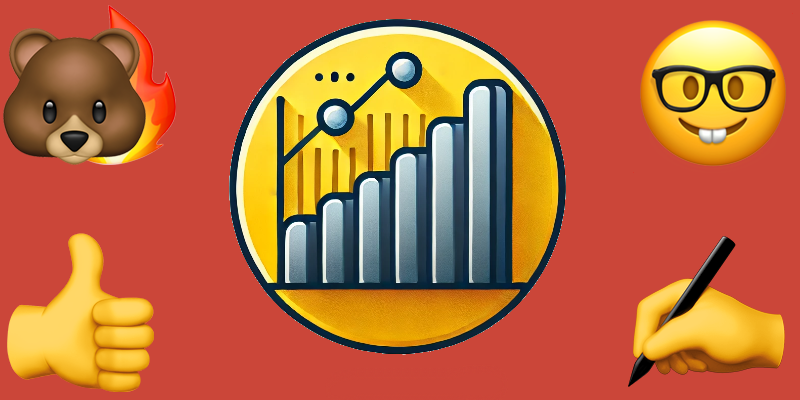
Every time a customer clicks “Proceed to Checkout,” a number gets quietly calculated behind the scenes — the Average Order Value (AOV). Think of it as the heartbeat of your online store, pulsing with the rhythm of every purchase. But why should you care about this mysterious metric? Well, AOV is the unsung hero of e-commerce. It tells you exactly how much each customer is spending, on average, in a single transaction.
Still wondering, what is AOV? Simply put, it’s the golden number that reveals how much cash your customers are throwing into their carts before they hit the “Pay Now” button. And, if you’re asking about the true AOV meaning, it’s not just another acronym to toss around in meetings — it’s a powerhouse of a metric that can shape your entire business strategy.
Why is it relevant? Well, e-commerce isn’t just about getting more customers; it’s about getting more out of every customer. A high Average Order Value means more profit from the same traffic. So whether you’re selling sneakers or spaceship parts, understanding and optimizing your AOV could be the difference between “just making it” and running a wildly successful online empire. Ready to dive into how to make this number work for you? Let’s get started! For other useful terms, visit our e-commerce glossary.

Table of contents
AOV Meaning: A Fresh Look at the Term
Alright, so let’s get down to business. Below, we define what AOV is and why you should track it. Let’s go!
What is AOV?
AOV stands for Average Order Value. Fancy, huh? But don’t let the name fool you — this is one of the simplest (yet most powerful) numbers you’ll ever come across in e-commerce.
The AOV meaning is pretty straightforward: it’s the average amount of money your customers spend per order on your website. So, if you’re selling coffee products and accessories and your AOV is $200, that means every time someone checks out, they’re likely shelling out $200 on beans, brewers, and maybe even a travel mug. Cha-ching!
But here’s where things get interesting: AOV is a key performance indicator (KPI) for e-commerce businesses. In non-geek speak, that means it’s a major signal for how your store is doing. If your Average Order Value is high, it suggests you’re squeezing more value from each visitor. Lower AOV? Well, it might be time to rethink your upsell game.
Why Should You Track AOV?
Tracking AOV is like having a backstage pass to your own business. It helps you understand customer behavior and reveals insights on what’s working — or not.
For example, if customers are only buying one small item each visit, you might want to throw in a bundle deal to tempt them to add more to their cart.
Let’s say you run an online store selling custom socks (because who doesn’t need more funky socks, right?). Your current AOV is $20, but you notice that many customers only buy one pair at a time. With a little nudge — maybe an offer like “Buy 3 pairs, get 1 free” — your Average Order Value could jump to $60 in no time. That’s triple the revenue, just by tracking and tweaking that little metric.
And fun fact: Amazon, the e-commerce giant we all know and love (or fear), has been AOV-obsessed from day one. That “Customers who bought this also bought…” suggestion? It’s designed to boost their Average Order Value. Smart, right?
So, whether you’re running a boutique shop or an international mega-store, tracking your AOV is like having a secret weapon for optimizing profitability. It’s not just about getting more customers — it’s about getting more from the customers you already have. That’s the true AOV meaning. Now, let’s dive into how you can calculate this magical number…
AOV Formula: How to Calculate AOV
Ready to dive into the numbers? Don’t worry, this one’s easy, especially when you are familiar with what AOV means. The AOV formula is as simple as it gets:

Translation: take all the money your customers have spent (Total Revenue) and divide it by the number of orders. The result is your Average Order Value. Think of it as the e-commerce version of checking your bank account after a wild shopping spree.
Practical Example
Let’s say you own an online store selling premium donuts. (Because, why not?) Over the past month, your store made $10,000 in total revenue from 500 orders. So, plug those numbers into the formula:

Boom! Your AOV is $20. That means, on average, every time someone ordered donuts, they spent $20. Not bad for sugary delights!
Why AOV Matters for Business
Now, here’s where things get juicy. This formula isn’t just for fun; it’s how e-commerce businesses measure performance. Platforms like Shopify, Magento, and Shopware use the AOV formula to give merchants insights into customer spending habits. Think of it like checking the health of your store. A higher AOV means your customers are filling their carts with more goodies — and that means more profit for you!
Real-world example? Let’s talk Apple. Every time someone buys an iPhone, they’re often walking away with a case, AirPods, and a charger. Apple’s Average Order Value is likely through the roof because they know how to upsell, cross-sell, and bundle products. And the formula is the secret sauce behind tracking that.
When was the last time you visited McDonald’s? Did you ever notice something interesting right before you hit the “Checkout” button on the self-service screen? That’s one of the strategies to increase AOV that you face regularly.
Fun Fact: Why Big Brands Love AOV
It’s hard to overestimate the AOV meaning for big brands. Speaking of bundling, here’s a fun fact: Amazon’s infamous “Frequently bought together” feature is designed specifically to pump up their Average Order Value. They’ve mastered the art of showing you exactly what you didn’t know you needed — right at checkout. A book? Why not throw in a bookmark, reading light, and a cozy blanket, too? You’ll be raising your own AOV in no time by doing something similar.
In short, the AOV formula is a powerful tool that shows businesses how much each customer is worth, on average, every time they place an order. It’s the ultimate metric for boosting revenue — without needing a PhD in math!
Is Low AOV Definitely Bad?
Let’s tackle the question: is a low Average Order Value a catastrophe for your business?
If you think it is, then you didn’t get the true AOV meaning. The correct answer: it depends.
Think of AOV like coffee — some people prefer a small, strong espresso, while others need a venti caramel macchiato with extra whip. In e-commerce, whether a low AOV is “good” or “bad” depends on your business model, customer behavior, and industry segment.
The Business Model Factor
If you’re running a store that specializes in selling high-ticket items, like luxury watches, then a low AOV might be a red flag. But if you sell everyday essentials — think toothbrushes or socks — having a low Average Order Value isn’t necessarily bad. You’re likely aiming for frequent purchases rather than large ones. In fact, it could be a sign your business is thriving if you’ve got a steady stream of smaller, repeat orders.
AOV is Relative
Here’s the secret: AOV is relative to your business. What’s low for one company might be perfect for another. For example, a tech store might have a high AOV because they’re selling laptops and gadgets. Still, a snack subscription box might have a lower AOV since customers are ordering smaller, less expensive items regularly.
Take Dollar Shave Club, for instance. Their AOV is probably lower than that of a premium skincare brand. But they’ve turned that lower AOV into a recurring revenue goldmine. Customers keep coming back, which more than makes up for each individual order being on the lower side. And hey, who doesn’t love a fresh razor delivered every month?
How to Use AOV to Boost Revenue
Even if your AOV seems low, it doesn’t mean you’re doomed to financial mediocrity. A low Average Order Value can still be turned into a revenue-boosting opportunity. By focusing on increasing that number, you can squeeze more out of every customer interaction. For example, you could introduce product bundles, upselling, or cross-selling techniques to gently nudge customers toward higher-value purchases.
Fun Fact: Low AOV, Big Wins
Here’s a fun example: IKEA. Yes, their furniture is affordable, which might keep their AOV lower than luxury brands, but their secret sauce? Volume.
IKEA visitors rarely leave with just one item. The low prices and strategic product placement keep the carts piling up. And let’s not forget the $1 hotdogs by the checkout line — low AOV, but high customer loyalty!
As you can see, a low Average Order Value isn’t automatically a bad thing. What really matters is whether that AOV fits your business goals and model. As long as you’re keeping an eye on how to improve it — and using it to your advantage — it can still lead to significant revenue growth.
How to Calculate AOV on Major E-Commerce Platforms
Spoiler: you don’t need to know the AOV formula. You don’t even need to understand the AOV meaning. It’s already there!
Tracking Average Order Value across different e-commerce platforms is like finding the best route on a road trip: each platform has its own shortcuts, tools, and tips to get you to your destination (higher profits!). Whether you’re selling vintage vinyl or gourmet dog treats, knowing how to calculate and track AOV is key. Let’s break it down by platform:
Magento: The Swiss Army Knife of E-Commerce
Magento is like the superhero of e-commerce platforms — it’s got everything you need, including powerful built-in analytics. To calculate AOV in Magento, all you have to do is head over to the Dashboard section in the backend, and boom — you’ve got your Average Order Value right there.
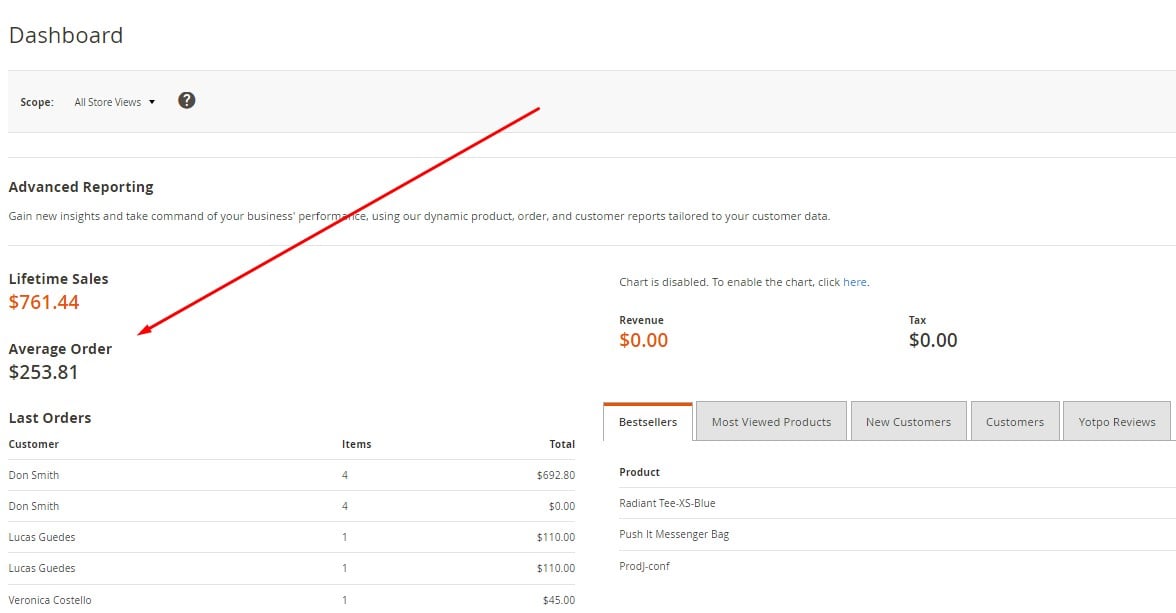
Average Order Value in Magento 2
Want to go even deeper? Magento offers plenty of extensions to customize your reporting. Vendors like Amasty or Mirasvit provide third-party solutions that give you even more insight into customer behavior, helping you track how product recommendations or upselling strategies affect AOV. For the best results, merchants should regularly check AOV trends and experiment with upsell techniques to see what moves the needle. We will return to it later.
Magento is so robust that even brands like Nike and Coca-Cola use it to handle their massive online stores. If it’s good enough for Nike, it’s probably good enough for your sneaker boutique too!
Shopify: The User-Friendly Powerhouse
Shopify prides itself on being super easy to use — like the friend who brings snacks to game night and never forgets the chips. Calculating AOV in Shopify is just as straightforward. Head to the Analytics tab, where Shopify’s reports already track your Average Order Value automatically. You don’t need a PhD in analytics to pull it off!
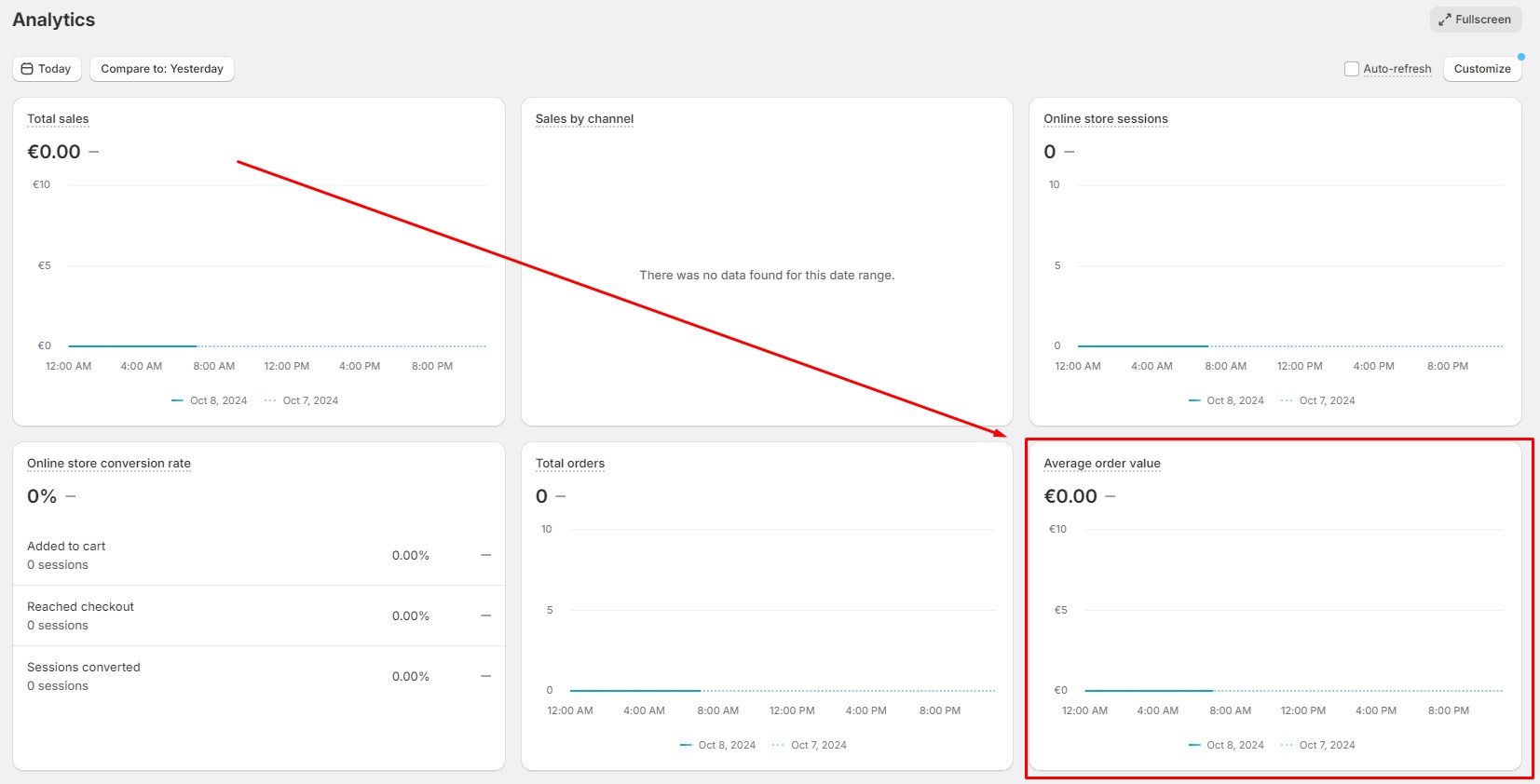
Average Order Value in Shopify
But why stop there? Shopify also offers tons of apps to help you optimize AOV. Apps like Bold Upsell and Frequently Bought Together can boost your Average Order Value by suggesting related products right when customers are ready to hit the checkout button. It’s like whispering, “Don’t you want to add a matching phone case?” just before they pay for their new phone. You will find more information about these tools below.
Kylie Jenner’s wildly successful cosmetics empire uses Shopify. If it can handle the demand of a viral lip kit drop, it can definitely help you track and boost your AOV.
Shopware: The Customizable Analytics Master
Shopware is like the LEGO set of e-commerce platforms — you can customize everything to fit your exact needs. To calculate AOV in Shopware, merchants can use the platform’s native analytics tools, which provide detailed insights into customer behavior, sales, and — you guessed it — Average Order Value.
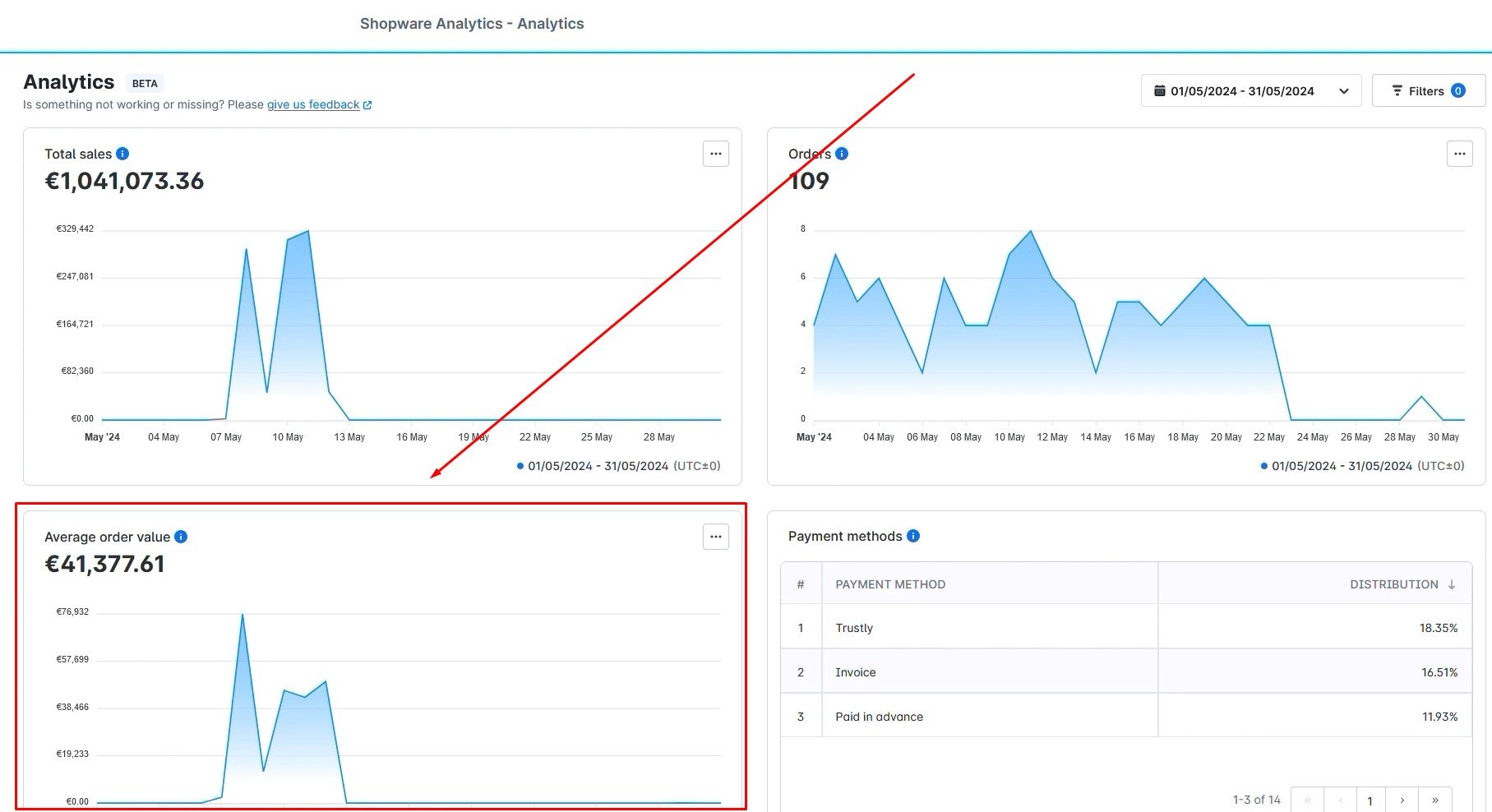
Average Order Value in Shopware
Shopware’s flexibility allows you to integrate third-party plugins like Analytics & Reporting by RetentionX for even more granular data. With such tools, you can tailor reports to fit your specific needs, helping you figure out exactly what drives your AOV and how to improve it. The platform also supports custom dashboards, so you can see your most important metrics, including AOV, at a glance.
No matter what platform you’re using — Magento, Shopify, or Shopware — tracking and boosting your AOV is crucial for maximizing profitability. Each platform offers powerful tools to help you keep an eye on this key metric, and by using extensions, apps, and analytics, you can continuously improve and refine your AOV strategy. The only limit? Your creativity in convincing customers to add just one more thing to their cart!
Why AOV Matters in Marketing and Business Growth
You’ve heard the saying, “Work smarter, not harder,” right? Well, that’s exactly what AOV does for your marketing and business growth strategies. A high Average Order Value doesn’t just make your bank account happier — it gives your marketing a serious power-up. Let’s dive into why AOV is a marketing goldmine and how it can boost your revenue without the stress of constantly hunting for new customers.
AOV: The Key to Smarter Marketing
Imagine you’re throwing a party. You could spend hours inviting more guests, or you could get the ones already there to grab a second drink and some appetizers. That’s what improving AOV is all about. Instead of focusing only on getting new customers, AOV helps you maximize the value of the ones you already have.
Marketing strategies that aim to increase AOV are like handing your customers a menu of irresistible extras. Want fries with that? How about a dessert? By increasing the average amount each customer spends, you boost revenue without having to roll out the red carpet for brand-new buyers.
Boosting Revenue with AOV: The Inside Scoop
Let’s break it down. Increasing AOV is like turning up the volume on your revenue without touching the dial on customer acquisition. You’re getting more from each customer, so you don’t need to keep spending huge amounts of time and money on ads or marketing campaigns just to get fresh faces in the door. You’re turning each transaction into a mini-jackpot.
Take Starbucks, for example. When you order your coffee, they suggest adding a pastry or sandwich at checkout. Sure, you came in for a latte, but you’re walking out with a scone, too. That small upsell just boosted their Average Order Value, and you didn’t even notice. Now imagine this across millions of customers — those pastries add up!

Petite Vanilla Bean Scone – Starbucks AOV Driver
Customer Lifetime Value: The Real Game-Changer
Improving AOV doesn’t just fatten your wallet in the short term; it also strengthens Customer Lifetime Value (CLV). When customers start buying more per order, they’re likely to keep doing it over time. Plus, higher-value purchases often lead to better customer experiences — think free shipping thresholds or premium packaging — and that keeps them coming back.
A real-world winner here is iHerb.They offer free shipping when your order hits a certain amount. If your cart doesn’t quite make the cut, iHerb kindly nudges you with a reminder. So, what do you do? Add a few more items to qualify for free delivery! While you’re saving on shipping, iHerb is happily boosting their AOV. Customers often buy more because they feel like they’re getting a better deal. This feeling also makes them loyal to the brand. And, as a result, it increases CLV. Who knew “free” shipping could spark so many impulse buys and turn them into returning customers?
Why AOV Should Matter to Your Business
If you’re still wondering why AOV should matter to your business, the answer is simple: more AOV = more profit. It’s the ultimate growth hack. Instead of constantly battling for new customers, focus on increasing the spending of the ones you already have.
Let’s say you run an online pet store. If your average customer spends $20 per order and you manage to increase that to $35 by offering bundles or premium treats, you’ve just boosted your revenue by 75% ((35-20)/20)*100) without having to gain a single new customer. That’s some serious growth without the constant hustle of customer acquisition.
In the world of high-end retail, some luxury brands have AOVs that stretch into the thousands. Think designer handbags or jewelry. With that kind of Average Order Value, they don’t need thousands of customers to make millions — they just need a few who are willing to go all-in.
As you can see, AOV is the secret sauce behind smarter, more efficient marketing. It drives customer loyalty, boosts lifetime value, and grows revenue — all without requiring you to constantly chase new buyers. By focusing on optimizing AOV, you’re building a strategy that leads to long-term, sustainable growth. So, next time you’re working on your marketing plan, don’t just think about how to get more customers — think about how to get more from every single one of them.
Tips to Increase Average Order Value
Looking to get more bang for your buck — er, boost your Average Order Value? You’re in the right place. Here are six killer strategies to help you squeeze a little extra from every order. Whether you’re using Magento, Shopify, or Shopware, these tips are easy to implement and can lead to major growth for your business. Let’s dive in!
1. Upselling and Cross-Selling: “Want to Make It Deluxe?”
You’ve seen it before: “Upgrade to a larger size” or “Customers who bought this also bought…” Upselling and cross-selling are tried-and-true ways to increase Average Order Value. The idea is simple: get customers to buy something more expensive or add a related item to their cart.
Example: You sell coffee machines. Why not offer premium beans or a fancy grinder at checkout or on a product page? You’ll not only increase AOV, but you’ll also create a more satisfied customer who’s ready to brew their perfect cup.
What about major e-commerce platforms? Well, they offer both built-in capabilities and third-party solutions in this area:
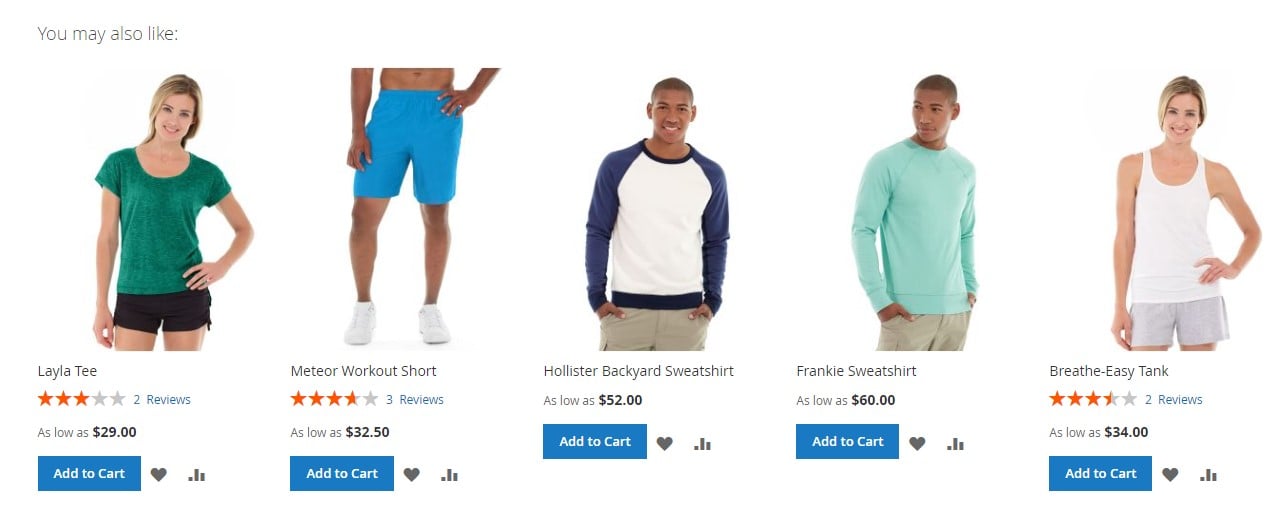
- Magento: Magento’s built-in Product Recommendations feature is perfect for this. You can set up related products, upsell, or cross-sell options right from the admin panel. If you want a more robust tool, pay attention to Amasty’s module:
- Shopify: Shopify’s Product Recommendations feature is built into the platform. Want more flexibility? Try third-party apps like (be careful: you enter the realm of AI in e-commerce) or .
- Shopware: Shopware offers built-in options for cross-selling, but for more advanced functionality, try or other similar third-party apps.
2. Product Bundling: “Get the Whole Set!”
Bundling is the art of offering multiple related products at a slight discount when purchased together. It’s like telling your customer, “Why get just one when you can get all of these for a special price?”
Example: If you’re selling skincare products, bundle a cleanser, toner, and moisturizer together at a slight discount. Customers love a good deal, and you’ll love the boost in your AOV.
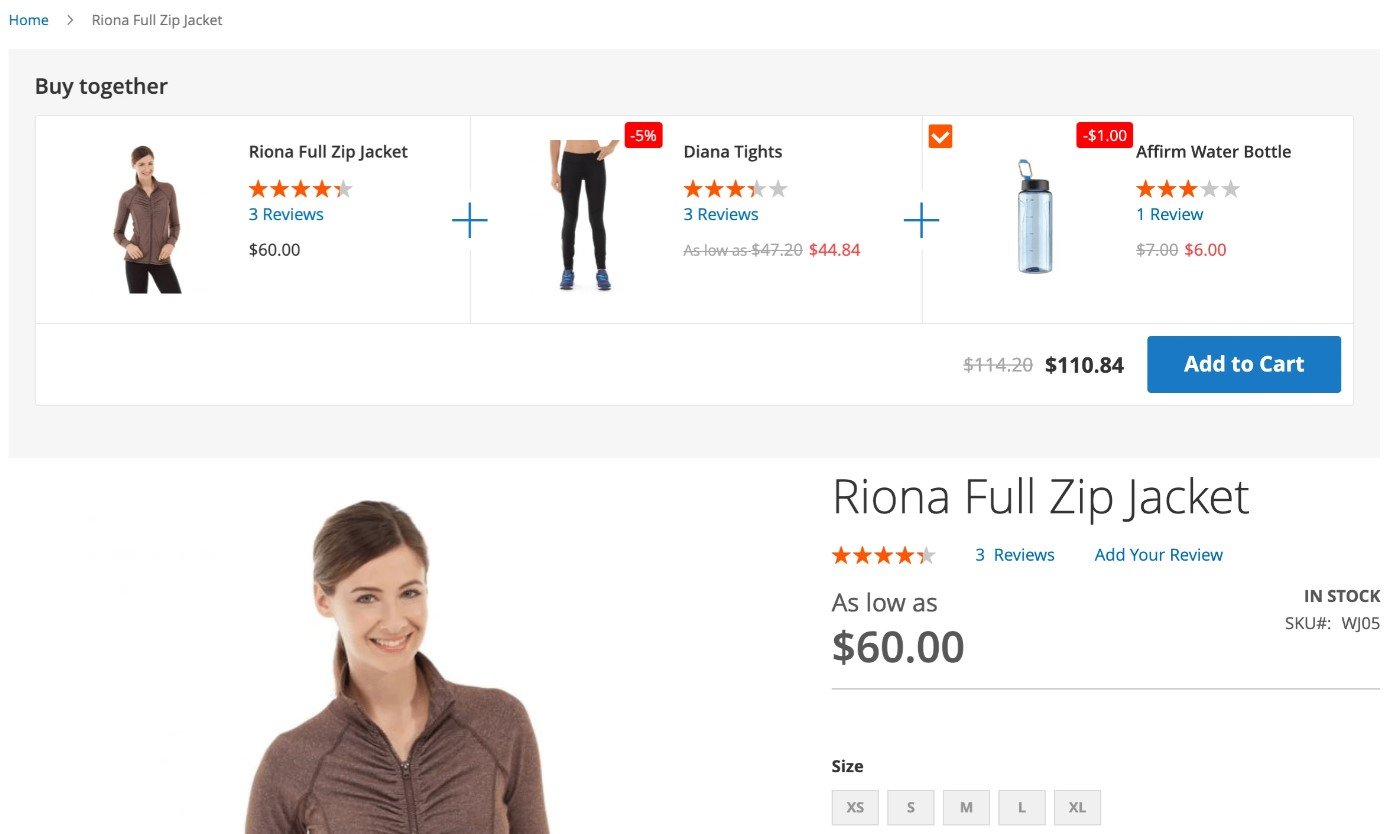
- Magento: Use Magento’s Grouped Products feature to create bundles easily. But there are always third-party apps that introduce a new level of perfection to the built-in functionality, like this extension by Mirasvit:
- Shopify: The app is a popular third-party choice for Shopify users who want to create bundles with ease.
- Shopware: is among the top-rated third-party apps that let you create bundles to boost AOV.
3. Free Shipping Thresholds: “You’re Almost There!”
People love free stuff, especially when it’s shipping. Setting a free shipping threshold encourages customers to add more to their cart so they don’t have to pay that extra fee.
Example: Let’s say your free shipping threshold is $50, but your customer’s cart is sitting at $45. Add a gentle reminder that they’re just $5 away from free shipping, and watch them add another item to their cart (bonus points if it’s something that increases your margins).
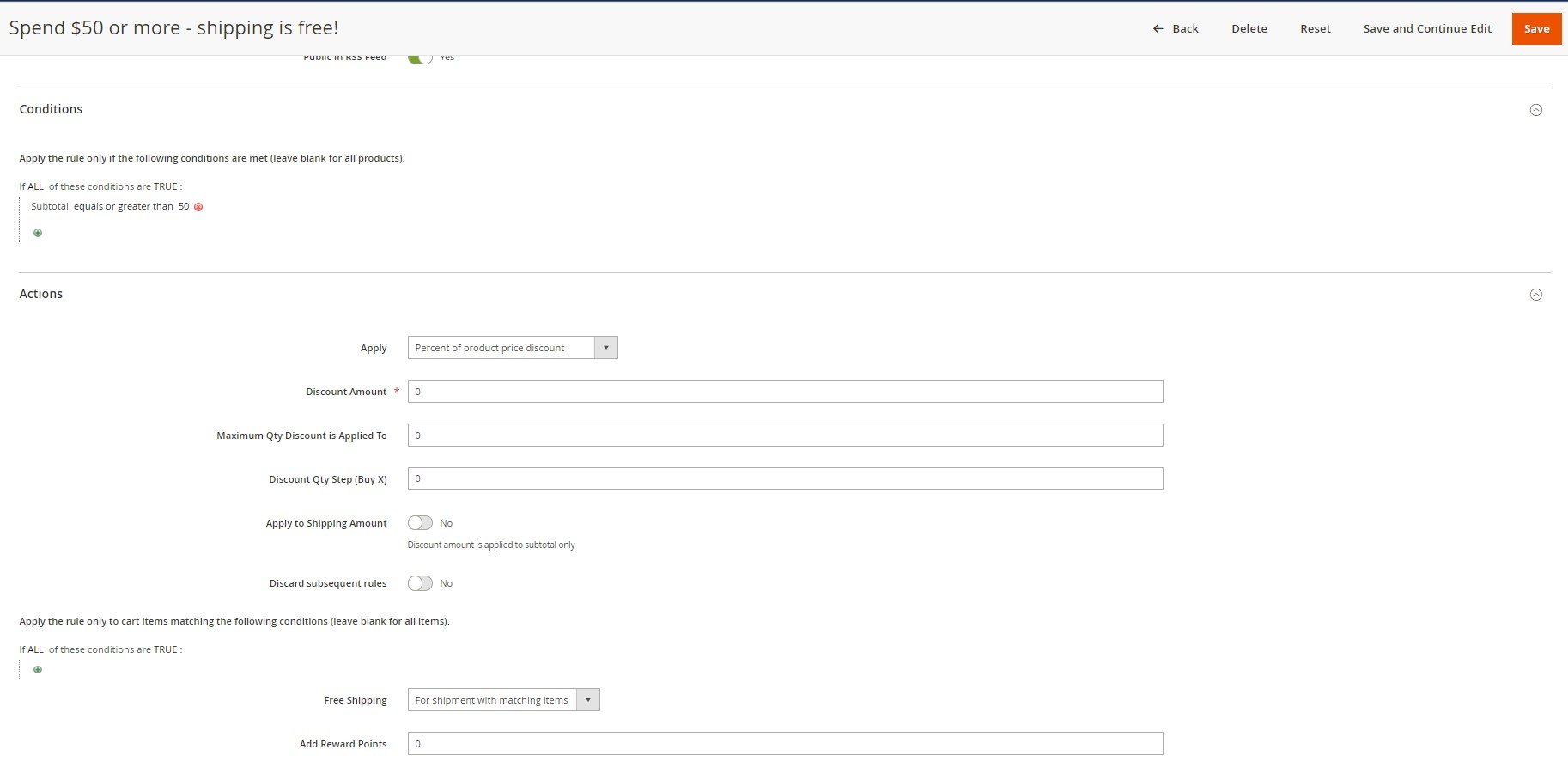
- Magento: Magento allows you to set free shipping thresholds in the Cart Price Rules section. You can then use third-party modules to highlight the offer:
- Shopify: Shopify has a built-in feature to set free shipping thresholds right in the Shipping Settings.
- Shopware: In Shopware, you can create free shipping rules easily through the Shipping Methods settings.
4. Volume Discounts: “The More You Buy, The More You Save!”
Who doesn’t love a good deal? Volume discounts reward customers for buying more by giving them a discount based on the quantity they purchase. It’s like saying, “The more you spend, the better the deal.”
Example: Selling pet food? Offer a discount if the customer buys three bags instead of just one. Not only do they save, but you’ve just tripled your AOV in one swoop. You can either propose all three at a discounted price or offer the fourth item for free.
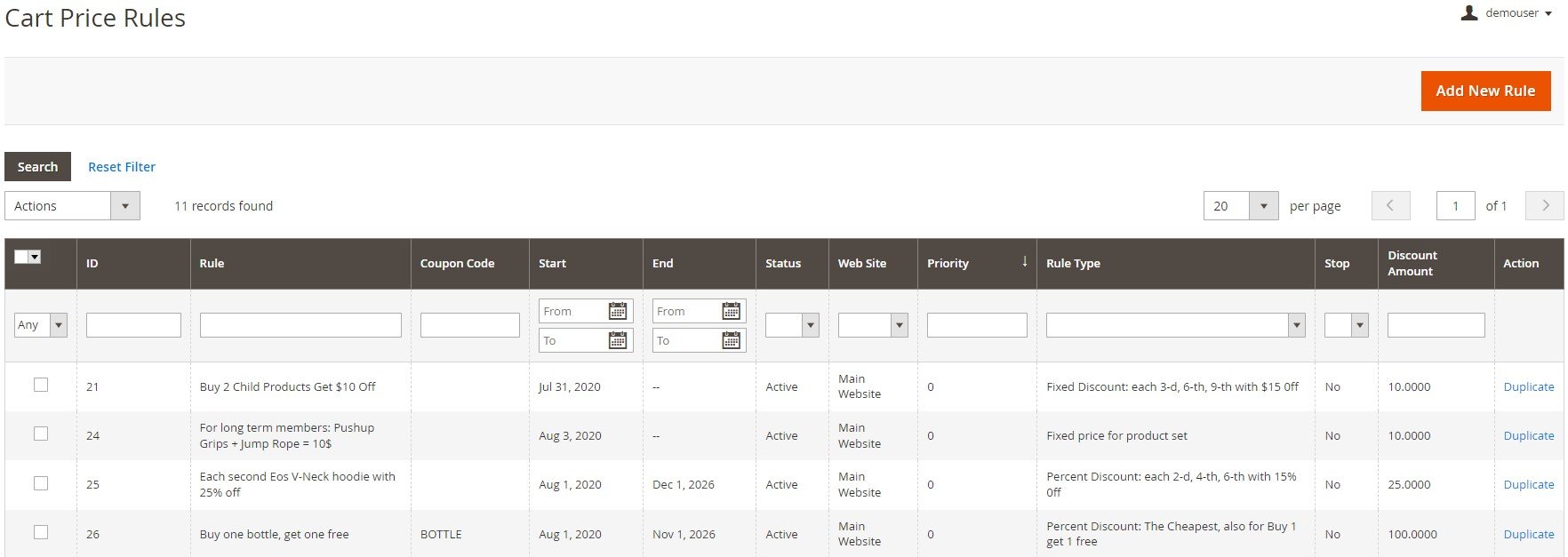
- Magento: Magento’s Cart and Catalog Price Rules are again here. They allow you to easily create volume discounts. Also, the platform’s advanced pricing feature works well enough. If you are looking for something more robust, like 20+ promotion types for extraordinary deals, pay heed to Amasty’s extension:
- Shopify: The app introduces a great way to add tiered pricing to your Shopify store.
- Shopware: Shopware’s Advanced Pricing feature lets you set up volume-based discounts.
5. Limited-Time Offers: “Act Now Before It’s Gone!”
Creating a sense of urgency can push customers to make decisions faster. Limited-time offers or flash sales encourage customers to add more to their carts before the deal disappears.
Example: Selling fashion accessories? Run a 24-hour sale offering 10% off when customers spend over $100. Watch your Average Order Value soar as people scramble to make the most of the deal.
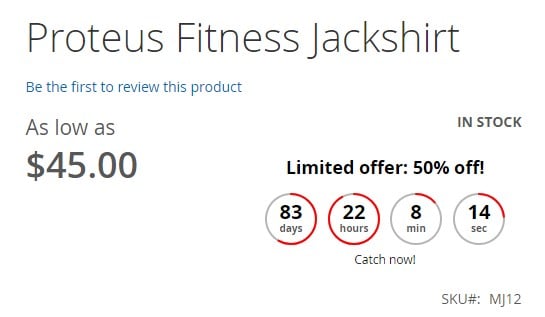
- Magento: Use Magento’s Special Price feature to create time-limited discounts. You can also enhance their efficiency by using a third-party fancy countdown timer:
- Shopify: The app allows Shopify users to create flash sales and limited-time discounts.
- Shopware: Shopware’s plugin lets you create urgency-driven offers to boost sales.
6. Personalized Recommendations: “We Thought You’d Like This…”
Sometimes the best way to increase AOV is by showing customers exactly what they want (even if they don’t know it yet). Personalized product recommendations based on browsing or purchasing behavior can lead to larger orders.
Example: If a customer buys a camera, suggest a memory card or camera bag right on the product page or at checkout. It’s like reading their mind, and it’s a great way to increase Average Order Value with minimal effort.
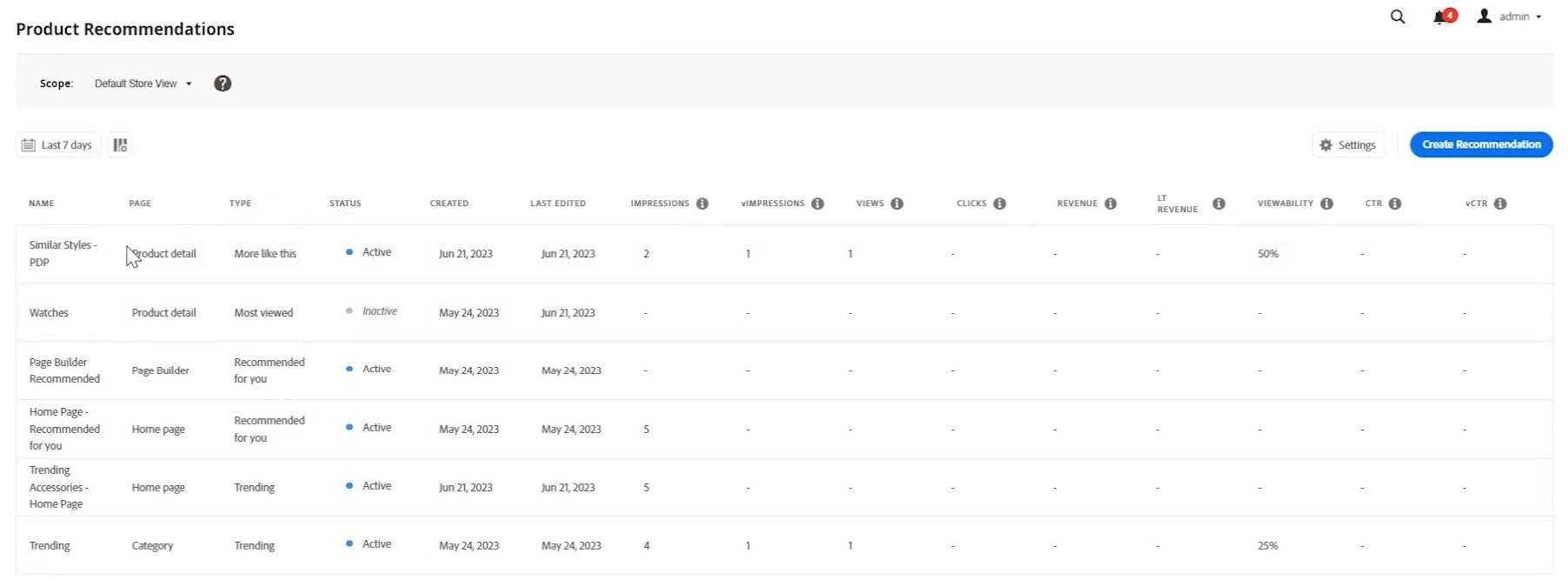
- Magento: Magento’s Product Recommendations powered by Adobe Sensei module uses AI to serve personalized suggestions.
- Shopify: Apps like help Shopify stores show personalized recommendations based on customer behavior.
- Shopware: Shopware’s Rule Builder and Dynamic Product Groups let you create personalized shopping experiences with ease.
These tips and tools can work wonders for boosting your AOV, no matter which e-commerce platform you’re using. By upselling, bundling, offering free shipping, creating urgency, or personalizing the experience, you can turn every sale into a bigger one — and that’s something everyone can get behind!
Conclusion
Average Order Value is like the secret ingredient that can take a dish from normal to delicious. It’s not just about getting more customers — it’s about getting more from each and every one of them. That’s the true AOV meaning. By tracking and optimizing your Average Order Value, you’re not only increasing revenue, but you’re also making sure your customers leave with fuller carts and bigger smiles.
From upselling and bundling to free shipping and personalized recommendations, there are plenty of creative ways to boost Average Order Value and, in turn, grow your business. So, the next time you’re strategizing on how to improve sales, remember: AOV isn’t just a number, it’s a roadmap to higher profits and happier customers.
By focusing on Average Order Value, you can build a lean, mean, revenue-generating machine without constantly chasing new customers. And who doesn’t want that? More value, less stress — that’s the AOV way.



